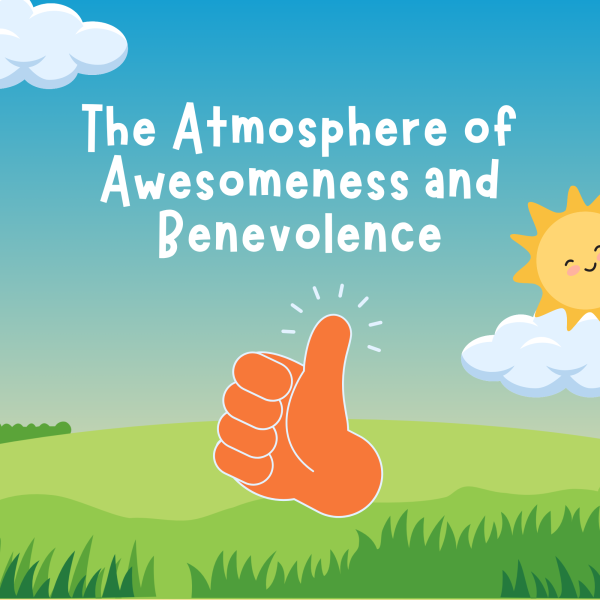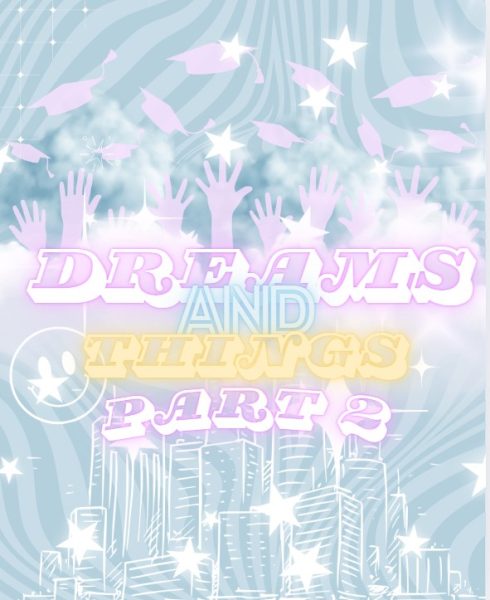BULLYING AT ITS UGLIEST
Warnings against bullying and further information about why it needs to be stopped.
Creeping Beast
It starts with one.
One moment of silence. One time you join in. One mean remark to start a cycle of torment that will stay with a person for the rest of their lives. Enter bullying. Bullying is vicious, predatory, and it has since mutated from a cliche movie scene to something much more subtle. A few remarks and insults can propel a bit of teasing into an unrecognizable beast.
Likely, many do not realize what they are doing before the consequences bite them in the back and though we have our ethical values to keep, it’s easy to get lost in the smudged conduct of ‘casually’ being mean. Awareness of our actions is crucial because we will truly never know the repercussions… and how it affects people for the rest of their lives.
Not Black and White
According to the American Psychological Association, “Bullying is a form of aggressive behavior in which someone intentionally and repeatedly causes another person injury or discomfort. Bullying can take the form of physical contact, words or more subtle actions.”
Bullying’s indefinite nature can come as a surprise to some of us, who have grown up with the media telling us that bullying can only be a certain way. Everyone pointing their fingers laughing, and physically assaulting someone— these are all blaring signs of bullying, and of course, are absolutely wrong to do to anyone. But the problem is this type of bullying is rarer.
What many people don’t know is the simple act of repeatedly leaving someone out or repeatedly talking bad about someone on an online forum can all be counted as bullying (www.apa.org/topics/bullying/). Picking on someone about their looks in a ‘joking’ manner, acting as if they don’t exist in a purposeful act of neglect, and pulling pranks are all ‘non-hurtful’ things that can eventually spiral into a habit that really hurts the one experiencing it.
And guess what? Bullying is everywhere, slinking in the shadows, and sometimes because of the cloud of secrecy, it’s a very hard thing to pinpoint. However, one thing stays consistently true: The words we say have consequences. The bad actions we commit leave scars. It is crucial to know that Bullying is not black and white.
And boy does the gray get muddy.
Twisted Psychology of Bullying
Have you ever heard of the phrase, “Hurt people hurt people”?
This is usually the root of a lot of bullying. In fact, psychologists have found that many bullies are just broken, traumatized, insecure people. They use these hurtful tactics to funnel their own pain or are confused and aggressive from situations that formed them into what they are now. There tend to also be different reasons, ones not having to do with the psyche but previous abuse, mental issues, and peer pressure are still the leading reasons for bullying.
Here are only some psychologically-based reasons why bullying happens:
Mob Mentality: owlcation.com says Mob mentality is a mentality that basically describes doing something because everyone is doing it (Think sheep falling off the cliff and all the sheeps following suit, even though it leads to their death). This is something that has pressured many to bully and make terrorize someone even if they don’t exactly want to.
For example, according to Yoon J., Bauman, S., Choi T., and Hutchinson: In South Korea, this mentality used to be a huge problem (thankfully, it has calmed down over the years). Kids would be ruthlessly bullied, completely avoided, used as ‘toys’ for bullies, and their classmates would either completely ignore them or join in. The options went like this: Stay silent, bully, or get bullied. And seeing how cruel bullies could be, people started picking sides, terrified that if they stood up they would receive the same treatment.
Problems at Home: According to the youth charity known as Ditch the Label, one in three bullies often have difficult home lives. Their range of difficult home lives can have a mental strain on their mind which will cause them to lash out by bullying and sometimes follow the abusive cycle their parents/ guardians have inflicted on them. Even formerly bullied kids could use bullying as a protective mechanism not to be bullied themselves.
Self Esteem or Mental issues: Ditch the Label also says most bullies have self-esteem issues and their psychology is that bullying other kids, it makes them feel better about themselves. This act of anger or spite could also be fueled by other mental issues. A high percentage of bullies also happen to be men, showing that patterns that are taught at the home could translate into these aggressive behaviors.
Overall, the reasons are endless for bullying and though the issues are under the skin for why bullies might do it, it still can’t excuse their actions. Remember, understanding why something happens is different from justifying it. At the end, the real damage goes to the victims who carry the bullying they experience on their backs for the rest of their lives.
Victim Always Suffers
Bullyingstatistics.org says that 58% of bullying victims will never speak up about their experiences.
The reason why: Fear. Alienation. Solitude. According to Ditch The Label and VerywellFamily, people who are bullied find themselves in a pit, and often they don’t know how to climb their way out. Sometimes bullying can be so severe that their personality is forever changed and they will become aggressive, quiet, depressed, anxious or their self-esteem will have dealt a huge blow.
According to a website dedicated to bullying, bullying victims will have trouble fitting in, can struggle in their studies, wrestle with many hurt and pained emotions, and additionally respond to this stress in unhealthy coping habits. More personal accounts in sharing forums describe many victims of bullying who have to deal with this pain for the rest of their lives.
Some through relation have their friends roped into being bullied and there are even people speaking on behalf of others who in terrible circumstances took their own lives in the aftermath. In the end, the victim always suffers and this is a tragedy in our modern age that is often severely overlooked. A lot of times this is because the scars aren’t visible and the past isn’t in a large, readable font for everyone to pick up.
Victims think they have to be silent… Keep in mind that you don’t have to be.
iUP Shares Their Story
When a survey about bullying was sent out to the iUPrep students, many unexpected and heartbreaking stories were submitted in return. This shows us that there really is no knowing who deals with the consequences of bullying on a daily basis.
Yadiz Matrinez, seventh-grader: “When I was in a brick-and-mortar school, there were these two or three kids who would pick on me. It wasn’t super intense, but when it happens to you every day non-stop, it gets to you. I actually got to talk to the “bullies,” and they were really just going through tough times. One of them actually became one of my friends after that. In the end it actually taught me a lot.”
Dawson Baker, sixth-grader: “I have always had a habit of walking on my tippy toes. So, back when I was in 3rd grade, every time I would walk into class my teacher would look at me then the class and say, “Oh guys look Dawson is warming up to perform a ballet recital”
Anonymous, tenth-grader: “I myself have not been bullied, but have experienced others being bullied a couple times. In 6th grade one of the kids in my class made my friend cry in the lunchroom because she was saying rude things to her even after asking her to stop multiple times.”
Yahia Osman, ninth-grader: “I was bullied for 6 years (from 2nd to 7th grade). I was always called names and was made fun of because I looked very skinny and was not as fast as the other kids because of my lung condition. I have always been pushed around and been made to do things that I never wanted to do. I was often laughed at, which made me very very upset and I hated talking to people until 8th grade when all the kids matured and started being good people.”
Isabella Ansari, ninth-grader: “Some bullies can be people whom you think are your friends. Though, if they make you feel badly about yourself (or if they hurt you), then they are not really your true friends. When you find those people who are true, you will eventually realize that those people who were your “friends” were not expressing real friendship. Also, bullies don’t reflect you, they reflect themselves (their jealousy, insecurities, and things like that).”
What We Can Do
It might seem impossible to fight off bullying.
This is why many people avoid the subject and excuse it by saying phrases such as, “Kids will be kids” or, “They will always stand up for themselves if they have too.” But the sad truth is that even the strongest of us can be victims of past bullying and inner strength is being able to say that you endured it, even if you couldn’t stand up at the time. It’s the army of bystanders that must also be responsible in standing up and not joining in, but being firm in their principles.
As a school, iUP must fight against bullying and the goal is this: Protect the Victim. Do whatever you can. If you don’t have the courage to stand up, then tell a trusted adult. If you’re scared to tell a trusted adult then confide in someone else that you know can. Sometimes, your power is not enough to stop bullies. Instead inform the parents of the child, or the school so they can take further action. This will bring actual change into a victim’s life.
And easiest of all the changes you can make is being a friend to the victim. Such as the acts of, reaching out, choosing gentleness, and just always being compassionate even if they’re a stranger. In the end, that is what everything comes down to. If the world is a little more welcoming to those who are alone because of your actions, then that is one step towards the golden horizon.
One kind word. One smile. One outstretched hand.
It takes one to start bullying, but it can also take one to end it all.
Sources
Bullying Statistics. 2022. Bullying Statistics – Bullying Statistics. [online] Available at: <http://www.bullyingstatistics.org/content/bullying-statistics.html> [Accessed 1 April 2022].
https://www.apa.org. 2022. Bullying. [online] Available at: <https://www.apa.org/topics/bullying/> [Accessed 1 April 2022].
Verywell Family. 2022. 6 Consequences Bully-Victims Experience. [online] Available at: <https://www.verywellfamily.com/ [Accessed 1 April 2022].
Ditch the Label. 2022. Why Do People Bully? The Scientific Reasons. [online] Available at: <https://www.ditchthelabel.org/why-do-people-bully/> [Accessed 1 April 2022].
Yoon, J., Bauman, S., Choi, T., & Hutchinson, A. S. (2011). How South Korean teachers handle an incident of school bullying. School Psychology International, 32(3), 312. https://www.academia.edu/es/10746845/How_South_Korean_teachers_handle_an_incident_of_school_bullying
Anatomy of Japanese Bullying. (2012, December 3). Nippon.com. https://www.nippon.com/en/currents/d00054/
JourneyHolm. “Bullying, Social Psychology, and Mob Mentality.” Owlcation, 26 Mar. 2022, owlcation.com/social-sciences/Kim-Social-Psychology-and-Mob-Mentality.

Hi, my name is Juliana Mun and I'm in tenth grade at iUniversity Prep. This is my first year at iUPrep. Some hobbies of mine are writing, shopping, and...












Anika Goswami • Apr 28, 2022 at 3:01 pm
This is a great article! It brings much-needed attention to an issue we sometimes forget to consider, and explains how bullying has a lasting impact on victims every day. Excellent job, Juliana!
Eve Bamber • Apr 27, 2022 at 1:31 pm
WOW wow wow! Juliana, you write so elegantly and I’m so glad you choose to take on this topic. An amazing and important read for students of all ages where Juliana successfully delivers such a powerful message.
Juliana Mun • Apr 29, 2022 at 9:40 am
thank you, eve!! your support and love really helped me through this article <3